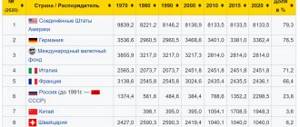Investment activity is the key to effective economic development at any level. An indispensable condition for making investments is the availability of free money that the investor is ready to invest in any project. Such funds represent sources of investment. There are a huge number of them in the modern world.
In order for investors to clearly perceive the current economic situation, a classification was invented that made it possible to structure all possible sources of investment financing.
Concept
Sources of investment are financial assets that, at the request of their owner, can be subsequently invested in selected investment objects. They can represent more than just cash. This category also includes property and intellectual property.
It should be noted that the main source of investment is net profit or the investor’s own available funds. For an individual, this will be income from the main activity. For a company, the difference between total revenue and existing costs. For the state, budget funds received from taxes and fees.
The problem is that own funds are always limited. This money may not be enough to make investments in the required volumes. To get out of this situation, the investor is forced to raise borrowed money for investment.
Real investment management
Only competent management of real investments determines the success and performance of an enterprise or business. Now we will look at the main stages and methods of managing real investments that ensure the most effective financing.
Analysis
First of all, a detailed analysis of financing is carried out. The real state of investment for a certain previous period of work is analyzed. The policy of managing real investments involves a thorough study of existing experience. It is important to assess the degree of investment activity of the company, as well as determine the degree of efficiency and effectiveness of programs that have already been started and completed at the previous stage of work. The analysis takes place in several stages. Real investment management should be based on objectivity:
- First, they examine the dynamics of financing in the growth of real assets, as well as the percentage of real financing in the volume of total investments of the enterprise.
- Then the level of effectiveness of individual financing programs and the degree of their successful implementation are examined.
- Then it is important to find out how successful past investment programs have been. It is necessary to determine the exact amount of investment that is required to complete the programs.
- At the fourth stage, the final stage, an analysis of the effectiveness of financing programs that have already been completed is carried out. It is determined to what extent they correspond to the planned indicators at the operational stage.
Determination of forms of financing
The specific forms of real investment are precisely clarified. It is important to use the available types of financing flawlessly. They are chosen taking into account specific areas of the company’s investment work, which become the basis for expanding current, intangible assets.
It is necessary to pay attention to statistics and the dynamics of the enterprise. If we are talking about an intangible investment object, it is necessary to give a competent analysis of its prospects as a source of profit.
Clarification of the full volume of real investments in a given period of activity
Experts determine the optimal investment size. The volume of increase in the enterprise's key assets planned for this period will be of great importance. Be sure to take into account the dynamics of growth in the volume of investments that have not yet been completed.
Selection of specific investment projects
A competent policy for managing real investments is also based on the precise selection of specific investment programs, which must fully comply with the forms and purposes of real financing. Detailed business plans are created. When the financing project is small, the plan can also be brief, but with mandatory coverage of all key points.
Specialists examine current offers on the financing market, consider prospects for purchasing assets, select investment properties with great potential, and carry out a thorough check of all selected investment properties.
Project effectiveness assessment
When investment projects have already been selected, it is necessary to evaluate their effectiveness as objectively as possible. All risk factors that need to be determined in advance must be taken into account. The main evaluation criterion is to ensure an increase in the company's market price. It is also important to check how the level of each project corresponds to the degree of planned profitability.
At this stage, be sure to identify all the risks that may accompany real investment in general. The role of such analysis is very important, since financing is often associated with the investment of capital in investment objects in large quantities. If all risks are not taken into account in advance, the solvency of the enterprise may drop sharply. When borrowed capital is attracted, this also leads to the risk of reducing the financial stability of the company. It is important to calculate in advance how investment risks may affect the financial stability, solvency, and profitability of the enterprise.
Formation of a real investment program
The competent formation of a real investment program is very important. All projects are evaluated, after which they are distributed depending on liquidity, risk, level of profitability, as well as compliance with the key goals of the company’s financial policy. Objective restrictions are taken into account, that is, the possible volume of formation of investment resources, the total volume of given real financing. It is planned to increase the market price of the enterprise.
It’s great if the formation of a real investment program went well, it corresponds to the key goals of the enterprise and takes into account all the risks. Then it will not need optimization. But it is not always possible to immediately achieve the effectiveness of the program. In this case, individual parts change depending on various factors that emerge during the implementation of the project.
Implementation of projects, investment programs
The stage of implementation of individual projects and the investment program as a whole is beginning. Here are the key tools with the help of which programs, projects, and the entire investment plan of the enterprise in general are implemented:
- project schedule;
- capital budget;
- financing scheme.
The calendar schedule must identify all the key periods when it is necessary to carry out specified types of work. Everything is done based on the functional responsibilities that are defined in the contract.
The capital budget is most often calculated for one year. It reflects revenues and expenses that are associated with the implementation of a specific investment project.
The financial base is specified in the financing scheme.
If you are going to invest in a specific enterprise, it is worth assessing the level of analytical work, the overall dynamics of activity, and the prospects of their financing plan.
Monitoring the implementation of the investment program
Then, when all the main work has already been done, they must constantly monitor the execution of the project and all its tasks. This stage of real investment management is also extremely important for the implementation of the program, maintaining profitability, and increasing the market value of the enterprise.
Classification and types
Currently, economic science identifies one main method that allows one to classify funds allocated by investors to various projects. He is fair, objective and has a right to exist. Sources of investment are:
- internal (own);
- external (they are divided into borrowed and attracted).
Naturally, it is most profitable for an investor to manage his own internal assets. Most often, you often have to pay for using external sources of investment financing. They can extremely rarely be free of charge. Let's look at all the listed varieties in more detail.
conclusions
In conditions of high uncertainty and turbulent phenomena in the national and global economies, the speed of making strategic decisions, introducing new products to the market and protecting products are decisive for the long-term existence and development of the company, therefore it is important to know and use all possible ways to increase and protect assets, as well as ensure a sufficient level of working capital for the company.
Source: “Management Accounting and Finance” magazine, No. 1 2020
Internal sources
Domestic sources of investment financing differ at the microeconomic and macroeconomic levels.
For the state, these are primarily budget funds. They are formed through the payment of taxes, fees, duties, income from state property, paid services and state enterprises. For a better understanding of this issue, we recommend that you read the article “Investment Policy of Russia”.
In addition, the specific level of internal sources of investment throughout the state is influenced by:
- savings of the population and commercial companies - potential investment funds from private investors;
- the country's savings - in the form of various reserve funds.
At the company level, internal sources of investment include:
- net profit;
- authorized capital funds;
- issue of securities;
- depreciation deductions.
Net income is rarely the main source of investment. As practice shows, its volumes are almost never enough to implement serious investment projects. It is a rare company that can boast that it has enough net profit to carry out full-fledged investment activities.
The authorized capital represents the amount of money that was initially invested by the founders of the company to ensure the normal provision of its authorized activities. Its value as a result of economic activity can be reduced or increased by an agreed decision of all founders. This fact must be reflected in the constituent documents. By decision of the founders of the company, the funds forming its authorized capital may be spent on investments.
Issue of securities by a company. This method of self-financing investment projects all over the world plays a colossal role. This statement is especially true for large, well-known companies. At the same time, in our country it is at the stage of active development. This source of investment is formed through the issue of bonds and shares, which can be purchased by both individuals and legal entities.
Depreciation deductions. This is the name for funds that must be systematically allocated to replace the worn-out part of production assets. In Russia, in modern economic conditions, these depreciation charges do not play a serious role due to their insignificant volume and significant inflation rates.
Budget financing
In a planned economy, budget financing was used quite widely, while the source seemed to be free, almost uncontrolled. In a market economy, this source has become almost inaccessible to business entities. This issue should be considered in a broad sense. The state concentrates significant financial resources in its hands and at their expense it must provide its citizens with education and medical care, social housing, pensions and other social expenses, the country's defense capability, law enforcement agencies, environmental protection, road construction, etc.
Issues of government spending have been developed at a sufficient level by foreign economists. Among them are J. Keynes, J. Stiglitz, N. Barr, A. Wagner, A. Peacock, J. Wiseman and others. They proved that the state should intervene in the economy, for which reasons are justified. One of them is from microeconomic theory market failures (economic inefficiency) and inequality (injustice) in the market distribution of income. The evidence about the objective need to increase government spending is very convincing, theories and models are substantiated. The evidence of some is concentrated at the macro level of the economy, others at the micro level as a “producer” of public goods with its own production function, factors of production, etc.
Thus, A. Wagner, who explained the growth of government spending in the economy, proved that as traditional society transforms into industrial society, a significant shift occurs from production in the household to production in the public sector. Many benefits at the household level - education, medical care, care for children, the elderly and the disabled - must now be provided by the state. The urbanization process requires significant government expenditures (construction of housing, roads, public transport).
A. Peacock and J. Wiseman substantiated the theories of the substitution effect and the inspection effect. The essence of the first is: in years of crisis for society (wars, social cataclysms, etc.) more significant government spending is required than in peacetime, and these increased expenses replace private spending. The essence of the second theory: after periods of crisis, total government spending does not decrease, but continues to grow, i.e. Funding for programs in an “expanded” version continues.
The growth of government spending is influenced by numerous factors, including transfer payments, lobbying interests, and social interests. fiscal interests, etc.
There are many problems in the field of government spending: how to constantly increase it (either increase the budget deficit or increase taxes), greater centralization of spending or decentralization.
The developed theories of government spending found their development in the works of Russian economists V.S. Zanadvorova, M.G. Kolosnitsyna, V.M. Rodionova, G.B. Polyak et al.
Government expenditures are expressed in the financing of government institutions, organizations and enterprises, public procurement in the private sector of the economy, in the financing of certain sectors of the economy, in the financing of social insurance and social assistance programs, in servicing public debt.
The rules for the provision of budget funds to business entities in the following cases have been determined:
- financing the needs of business entities in the public sector;
- support for entrepreneurial activities of social importance;
- targeted budget loans with the condition of repayment with appropriate interest;
- grants and subsidies - free, highly effective projects, carried out on a competitive basis and important for the region;
- equity participation of government agencies in the implementation of the project together with commercial structures;
- benefits-guarantees for loans received from commercial banks;
- in case of non-repayment, the state returns the loan to the lenders;
- financing the purchase of goods and services, government orders, and organizations producing them.
Thus, in 2007, the increase in allocations from the federal budget to the national economy will amount to almost 50%, or in absolute terms more than 497.2 billion rubles, or 9.1% of all expenses. The direction of these amounts can be grouped into:
- financing of general economic issues, fuel and energy, exploration and use of outer space, water resources and forestry - they account for 10.6% or from 1.6 to 2.8%;
- reproduction of the mineral resource base, agriculture, communications and computer science – 12.8%;
- transport - 37.2%, applied scientific research in the field of national economy - 12.1% and other issues in the field of national economy - 27.3%.
A typical industry that is subject to government support is agriculture. Here, the incomes of workers due to the current conditions are low, the industry is dependent on natural and climatic factors, often unpredictable, the volume of demand and incomes are always unstable, competition is strong, etc. Taking all this into account, the national project of the Russian Federation provides for various measures to support agricultural producers. In this light, three Rules approved at the end of 2006 by a decree of the Government of the Russian Federation (Rossiyskaya Gazeta of January 24, 2007) are important for the provision from the federal budget of subsidies to the budgets of constituent entities of the Russian Federation to reimburse part of the costs of paying interest on investment loans: a) received in 2004- 2007 by agricultural producers, organizations of the agro-industrial complex (including agricultural consumer cooperatives) and peasant (farm) farms in Russian credit institutions for a period of up to 5 years, including for the purchase of all types of domestically produced agricultural machinery and breeding stock, planting of perennial plantings and vineyards , construction and reconstruction of livestock complexes and flax and flax fiber processing enterprises: b) received in 2004-2007 by agricultural producers, agricultural organizations and peasant (farm) farms in Russian credit institutions for a period of up to 3 years: c) received in 2006-2007 years in agricultural credit consumer cooperatives by members of these cooperatives.
Regional target programs are financed from the regional budget, such as support for small businesses, measures for the development of fuel and energy, agriculture (various measures for the development of crop and livestock production, activities in the field of agricultural production, institutions providing services in the field of livestock, subsidizing interest rates on attracted loans from credit institutions); further, individual activities in the field of development of forestry, transport, applied research are expenses under government contracts for R&D; regional target programs in the form of construction of general civil facilities (receipt of non-financial assets).











